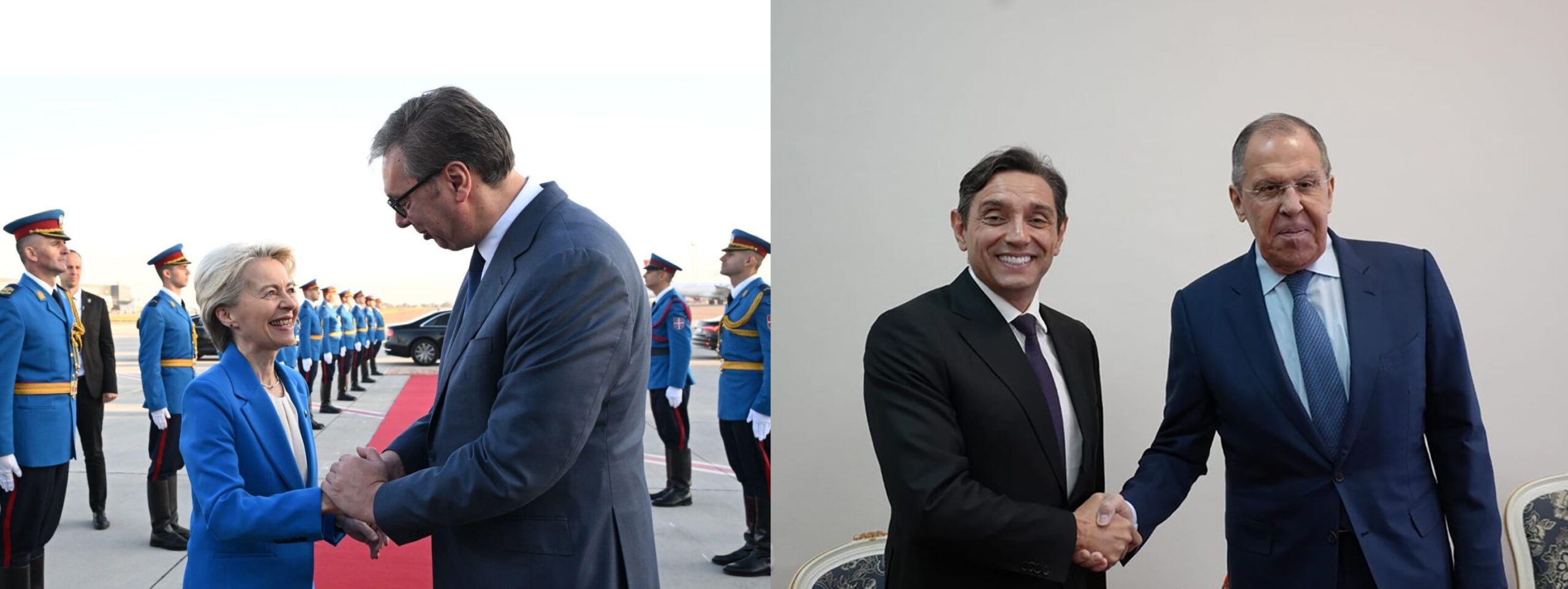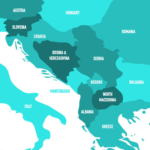The BRICS summit in Kazan did not become decisive for Serbia in terms of geopolitical choices. As before, the country pursued the policy of balancing between the EU and Russia. However, Belgrade’s relations with both its European and Russian partners are seeing a shift.
Moscow in focus
Serbian President Aleksandar Vučić, as is known, did not personally attend the BRICS summit in Kazan, Russia, due to meetings with the heads of European governments. Formally, the visit to Belgrade of the prime ministers of Greece and Poland could serve as an excuse for canceling the trip to Russia. However, it was a clear signal that Vučić sent to Moscow: the EU is currently a priority foreign policy direction for Serbia.
However, “priority” does not equal “exclusive”.
Therefore, in line with Serbia’s multi-vector foreign policy, a powerful delegation from the Serbian government led by Deputy Prime Minister Aleksandar Vulin did travel to Kazan. The team also included Minister of Defense Bratislav Hasic, Minister of Economy Adriana Mesarovic, and Minister without portfolio Nenad Popovic, who gave Russian media plenty of interviews widely complimenting Russia.
Although Serbia is not prepared to join BRICS, Belgrade’s signal to Moscow was obvious: it has a clear intention to expand and deepen Serbian-Russian cooperation.
The message was unexpectedly strengthened by the row that arose during the visit to Serbia, as part of the diplomatic tour of the Western Balkans, by European Commission President Ursula von der Leyen.
The chief of the European Commission canceled the meeting with Prime Minister Milos Vucevic, because immediately before the being scheduled to meet with her, the head of the Serbian government held talks with the Russian Minister of Economic Development, Maksim Reshetnikov. The EC President canceled the meeting with PM Vucevic after the announcement published on his website of the meeting with the Minister of Economy of Russia, EC spokeswoman Ana Pisonero explained. The statement says the two countries plan to strengthen cooperation in economic and other areas. In this context, it made no sense to hold the initially scheduled meeting, the spokeswoman added.
Prior to that, however, von der Leyen held a rather warm meeting with Vučić, so the Serbian leadership managed to maintain some balance this time as well. Still, Belgrade managed to convince Moscow that the development of Serbian-Russian relations is in the focus of the Serbian government.
Belgrade’s pragmatism
The motivation for “moving in different directions at once”, which the Serbian authorities are trying to implement today, lies in the purely pragmatic nature of Serbia’s relations with its partners and, accordingly, in the most pragmatic foreign policy. The Serbian leadership shows confidence that combining European integration and friendly relations with Russia is not a contradiction, but, on the contrary, a guarantee of obtaining benefits and preferences in each of these two directions. First of all, it is about securing funding from the EU as part of European integration processes and cheap Russian gas as payment for Belgrade’s loyalty.
Geopolitical multi-vectors for Serbia in practice means not so much an existential choice between the West and the East, but access to both EU and Russian resources. This policy has worked successfully for years, and the latest achievements of the Serbian economy are a consequence of this foreign policy course as well.
Due to the fact that the current foreign policy is beneficial for Serbia, there is no reason to expect that Belgrade will abandon its multi-vector nature on its own initiative. Only a shift in external environment or, more precisely, a shift in the policy of external actors towards Serbia can put an end to this maneuvering between the eastern and western paths.
Pause for European integration
The refusal of the head of the European Commission to meet with the Serbian prime minister can, to some extent, be seen as a warning to Belgrade. The content of this message is simple: in today’s geopolitical conditions, developing relations with Russia is incompatible with European integration.
If Belgrade bets on deepening Serbian-Russian cooperation, Brussels may move from symbolic warnings to more concrete steps in the future. This could involve limiting funding for Serbia from the EU budget.
Such a move has long been discussed in relation to Belgrade’s refusal to align its foreign policy with that of the EU, that is, its reluctance to impose sanctions on Russia.
Serbia’s loyalty to Russia has already effectively stopped the European integration process – because new negotiation chapters have not been opened for the third year in a row – but the determination of the Europeans has not yet been sufficient to officially put Serbia’s European integration on hold, or at least to block the allocation of funds to Belgrade under European programs.
If the European Union is more resolute to see all membership candidate countries align their foreign policy, the option of suspending Serbia’s European integration may be on the table. At least after the Belgrade demarche by Ursula von der Leyen, such developments look somewhat more realistic.
Russian proposals
Meanwhile, for Russia, it is no longer enough to see Belgrade’s loyalty which involves snubbing EU sanctions, it’s no longer enough to maintain cooperation in the economic, and, in particular, energy area. So Belgrade will have to pay an additional price for cheap gas, and it’s not about the money. In return, Moscow wants to see Belgrade in the camp of its geopolitical allies, among countries that position themselves as an alternative to the Western world.
Previously, Serbia – the only state in Europe – signed a free trade agreement with the EAEU (Eurasian Economic Union), became an observer in the Parliamentary Assembly of the CSTO (Collective Security Treaty Organization). Now it is the turn of involvement in BRICS as a global anti-Western union (as Russia sees it).
Vučić’s personal invitation to the summit in Kazan was an offer he was supposed to be unable to reject. However, he ultimately did so, but the large Serbian delegation at the BRICS forum, the most complimentary interviews of Serbian government officials with Russian media, and, ultimately, Vučić’s promise to come to Moscow for Victory Day celebrations on May 9, 2025, should have made a positive impression on the Kremlin and somewhat compensate for the president’s absence in Kazan.
In the future, we can expect the Serbian policy of refusing to sanction Russia to continue. Also, we will be seeing the strengthening of Russian-Serbian cooperation in various fields. It is, first of all, about greater involvement of Serbia in BRICS and all other anti-Western formats.
Shift towards Moscow
Moscow’s desire to achieve greater loyalty from Belgrade in the military-political sphere is also noticeable. It is no coincidence that one of Serbia’s representatives at the BRICS summit was the Minister of Defense, and the head of the delegation, Vice Prime Minister Vulin, had to carefully choose his words when answering “on the sidelines of the Kazan summit” the questions from the Russian media about the prospects for Serbia’s imports of Russian weapons and the Russo-Ukrainian war.
Shortly after visiting Kazan, Vulin traveled to Minsk, where he took part in a conference on Eurasian security (which, in fact, was convened based on the CSTO). The Serbian Deputy Prime Minister also held separate talks with Russia’s Minister of Foreign Affairs Sergei Lavrov and Belarusian Defense Minister Viktor Khrenin.
In the future, we can expect the strengthening of this military-political vector, because it is very important for Russia not only to attract Serbia to its side, but also to block any, even hypothetical, Serbian-Western and Serbian-Ukrainian cooperation in this area.
A tilt towards Moscow and its satellites is guaranteed to increase the differences between Belgrade and Brussels and to maximally narrow the possibilities of Vučić’s favorite balancing act.
Of course, riding a tightrope on a bicycle while juggling various objects is possible. But for how long?


